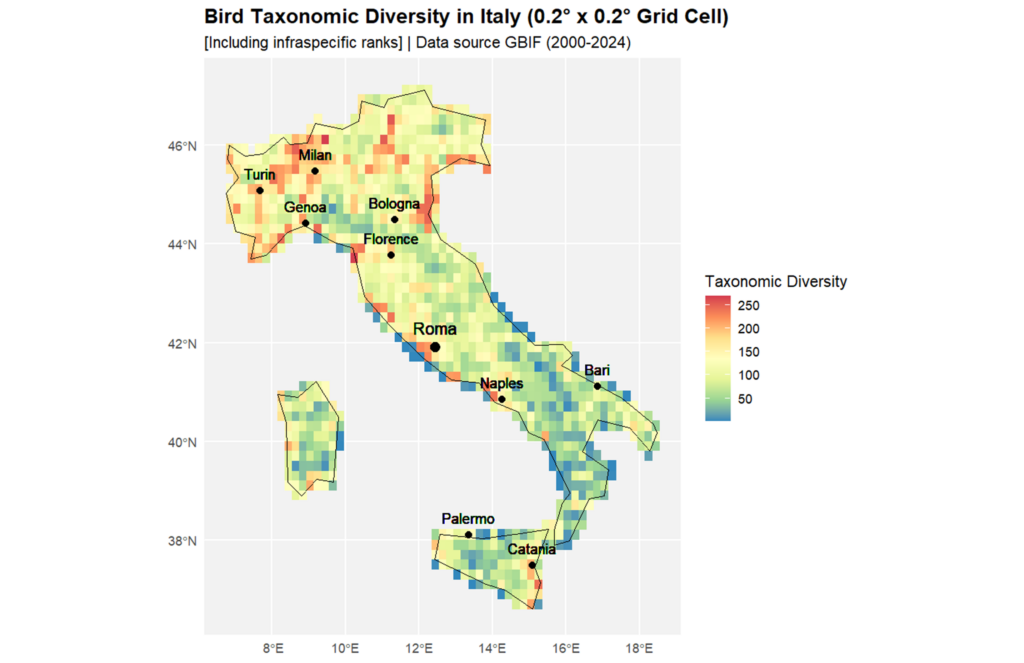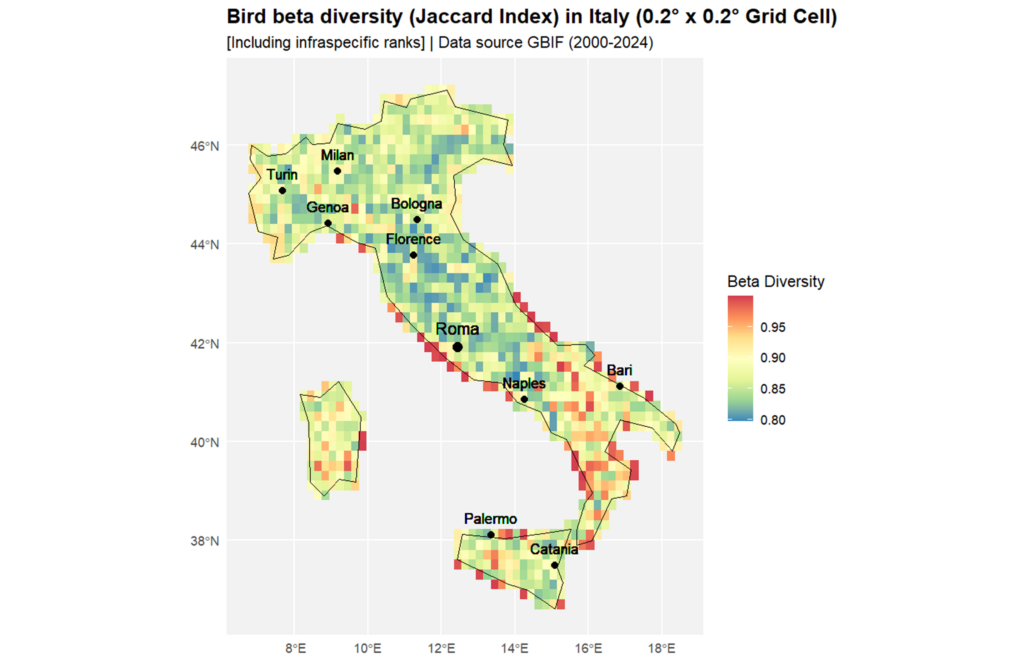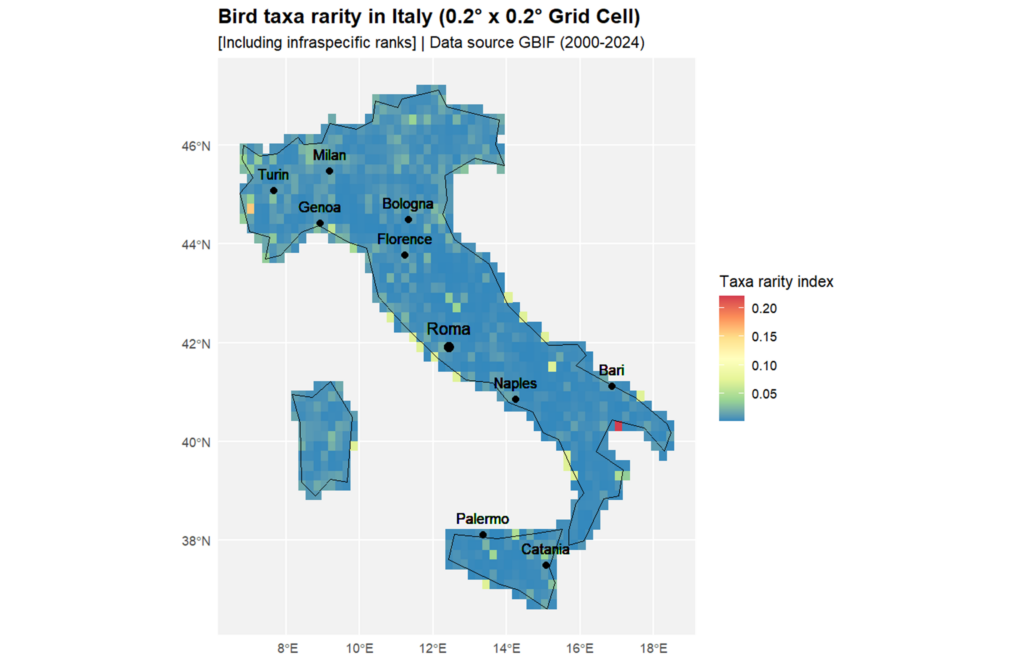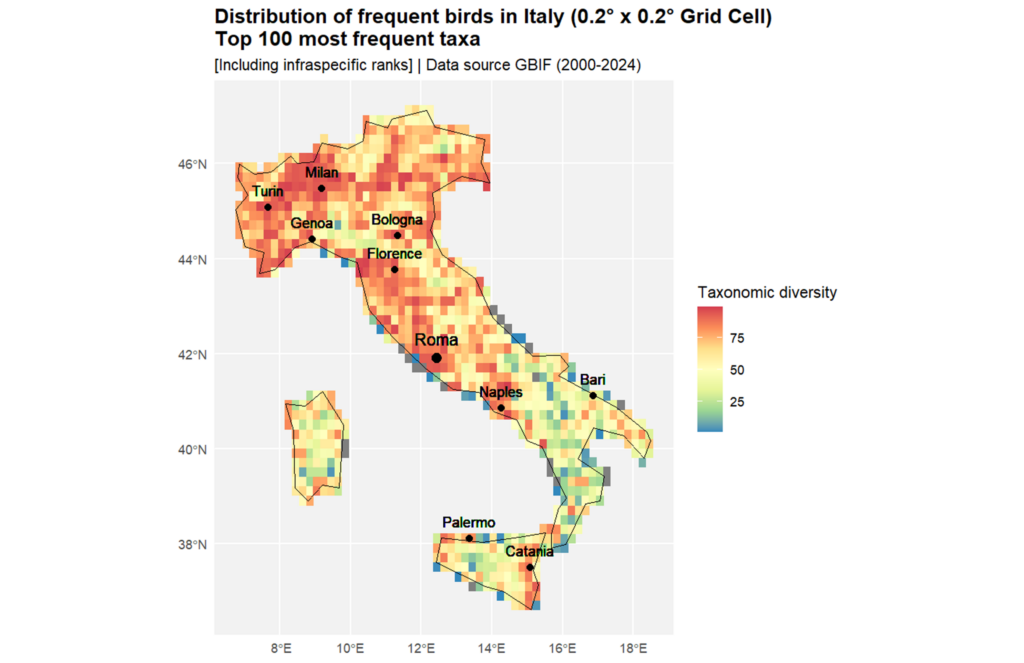By leveraging big data, we can observe that birdlife is unevenly distributed across the country. Furthermore, we find that the challenges of conserving and integrating birds from Italy into territorial projects are similarly uneven, both quantitatively and qualitatively. For example, we learn that the avifaunal communities of the Mezzogiorno are more specialized than those of the Po Plain, while the greater diversity of the Po Plain makes bird conservation integration more complex.

In the 0.2° x 0.2° grid cells, taxonomic diversity ranges from above 250 to below 50
- The Po Valley stands out as the area with the highest diversity, while the Mezzogiorno (Southern Italy) shows a lower taxonomic diversity overall
- Certain coastal areas appear to host a limited number of taxa, and the Apennine Mountains exhibit slightly lower diversity compared to other regions

The Jaccard Index measures the proportion of species shared between two sites
- A value of 1 means the sites share all species, while a value of 0 means they share none
- The Mezzogiorno and certain coastal areas exhibit higher beta diversity, suggesting that these regions host distinct species communities compared to the rest of the territory. In contrast, the central region appears to be more homogeneous, with species composition more similar to other areas of the country

The computation of the bird taxa rarity index reveals limited hotspots of rare taxa in Italy.
Four main locations are identified as hosting significantly rare species:
- Mont Viso in the Northwest
- The coastal areas to the east and west of Rome
- A location to the west of Foggia
- A location to the west of Taranto

When limiting species diversity per grid cell to the top 100 most frequent taxa, it appears that Northern Italy hosts more of the most frequent taxa than Southern Italy. When compared to the Beta diversity map, this suggests that the Mezzogiorno and certain coastal areas are home to more specialized or specific habitat-dependent bird communities, despite having lower overall species richness.
Conclusion
Big data on birds from Italy reveals that taxonomic diversity is unevenly distributed, with northern regions hosting a higher number of species, including many common ones with lower conservation priorities, while southern regions, despite having fewer species, support a more specialized and sensitive avifauna dependent on rare habitats, posing distinct conservation challenges. The richest areas, which potentially exhibit the highest number of double materiality dimensions (CSRD, TNFD), are located in the northern part of Italy.
